The DragonBall Chip’s Super History!
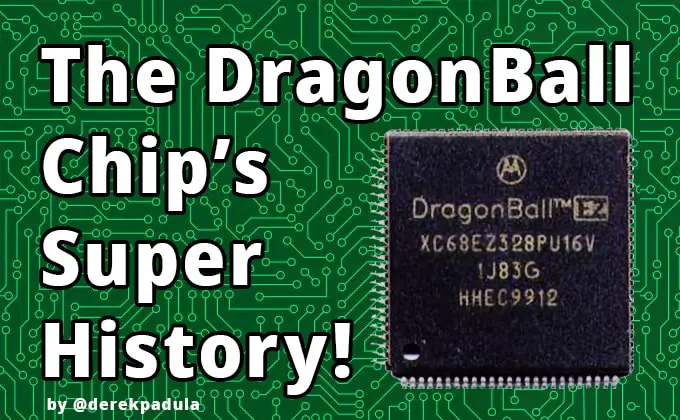
Dragon Ball transformed the mobile industry! The Dragon Ball franchise inspired the name of a microprocessor chip in the 1990s made by Motorola that powered 75% of all handheld devices in the world!
Akira Toriyama’s Dragon Ball is the world’s most-recognized anime and manga series. But in Japan it reached its first peak in popularity during its original broadcast, from the late-’80s to mid-’90s.
Dragon Ball was extremely popular in Hong Kong and Taiwan. You can read more about the cultural flow of ideas from Japan to Southeast Asia in my article on Hong Kong comics and their influence on Dragon Ball.
At the same time, the first handheld computers were being invented.
Before the advent of smart phones, there were only bulky desktop computers or mobile phones. Tech companies merged them together to create PDAs (Personal Digital Assistants).
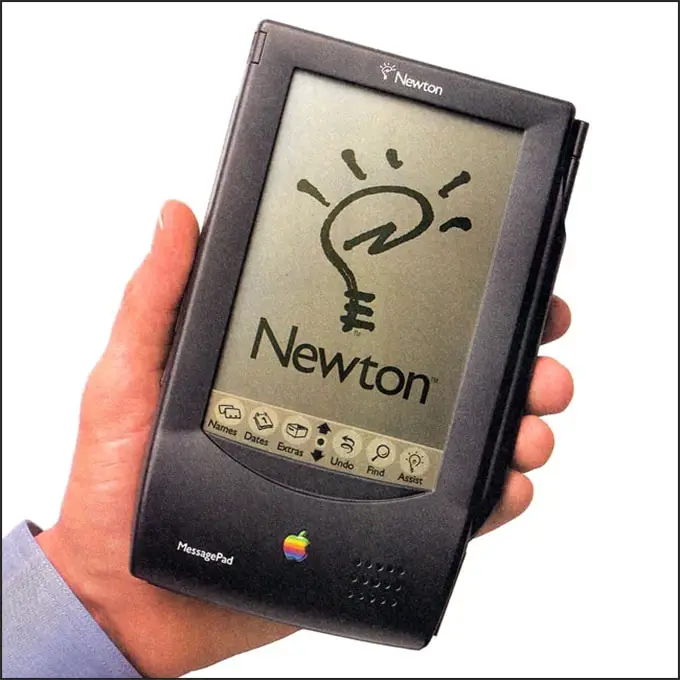
The first attempt at this was the Apple Newton PDA in 1993. In fact, Apple coined the term PDA. But this device was too expensive, bulky, and resulted in a financial flop.
But chip manufacturer Motorola saw an opportunity for the PDA concept.
Motorola was a multinational telecommunications and chip manufacturing company based in Schaumburg, Illinois.
They had a branch in Hong Kong, and their engineers thought of a way to improve on the Newton.
Birth of the DragonBall Chip
Motorola’s engineers felt the Newton’s main flaw was that it needed separate integrated circuits for each task. This resulted in excess cost and size of the device. So the engineers sought to solve these problems by inventing a single chip that controlled everything.
According to Hong Kong news site Abacus, the local engineers had to get approval from the US management staff.
H.L. Yui, the Hong Kong engineer who founded the DragonBall chip team, said, “The biggest challenge was to convince the management in the US to let us do this, but Gunter shared our vision.”
That is, Tom Gunter, the Motorola executive who once led the creation of the 68000 CPU that powered early Apple Macintosh computers. The 68000 was one of the most influential microprocessors of all time.
The only question was what to name this new chip.
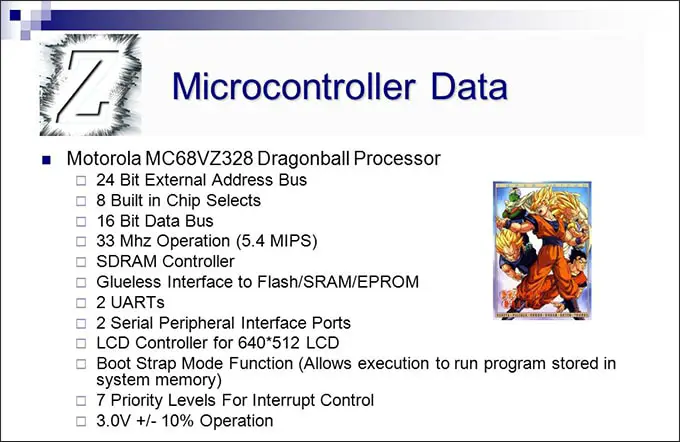
DragonBall chip tech specs from a corporate presentation
Of course, they named it DragonBall.
They named it the DragonBall chip because of their love for the Dragon Ball anime, manga, video games, and overall pop cultural phenomenon that is the amazing Dragon Ball franchise.
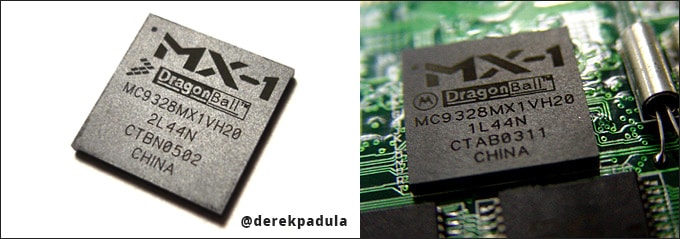
Like the series it was named after, the DragonBall chip was a huge success.
DragonBall was utilized in Motorola’s own devices, as well as mobile phones, every single Palm device (such as the PalmPilot), other PDAs, and assorted handhelds.
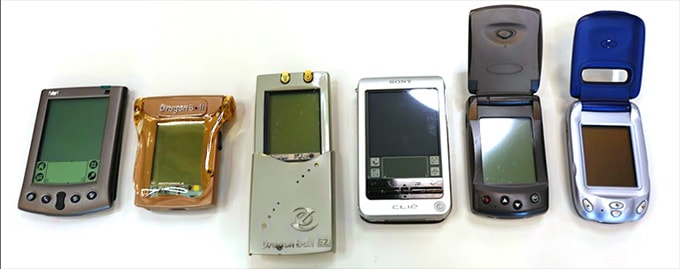
As the years progressed, the DragonBall chip continued to improve. Like Goku, Vegeta, Gohan, and others in Dragon Ball, the DragonBall chip kept gaining more power and speed.
In 1995 there was the original DragonBall. In ’98 the DragonBall EZ. And then in ’99 the DragonBall VZ.

Looking at the image above, knowledgeable Dragon Ball fans will notice the similarity between the fonts used in the early logos for the chips and the logos for Dragon Ball.
Palm was the world’s number 1 handheld maker, and Palm became the biggest purchaser of the DragonBall chip for its PalmPilot.
By 2001, CNET stated that these “processors are found in more than 75 percent of handheld computers.”
The DragonBall chip was so common that it was likely inside a device you used when you were younger. Or maybe you still have one in storage. Please tell me you’re not still using a PalmPilot!
Decline of the DragonBall Chip
However, with success comes competition.
Just like in the Dragon Ball story, a rival power appeared to threaten Motorola. Other American chip manufacturers saw an opportunity to develop their own chips to compete with the DragonBall.
As it happened, Intel and Texas Instruments engineered chips using ARM (Advanced RISC Machine) technology that were faster than the DragonBall chip.
In response, in 2002, Motorola unveiled the DragonBall Super VZ successor chip and the DragonBall MX1, with their own ARM technology.
That’s right ‘DragonBall Super’ before there was Dragon Ball Super.
Despite Motorola’s best efforts, use of the DragonBall chips declined in popularity, and Intel and Texas Instruments increased their market share to the point where Motorola ended the DragonBall line in 2003.
Chip Conclusion
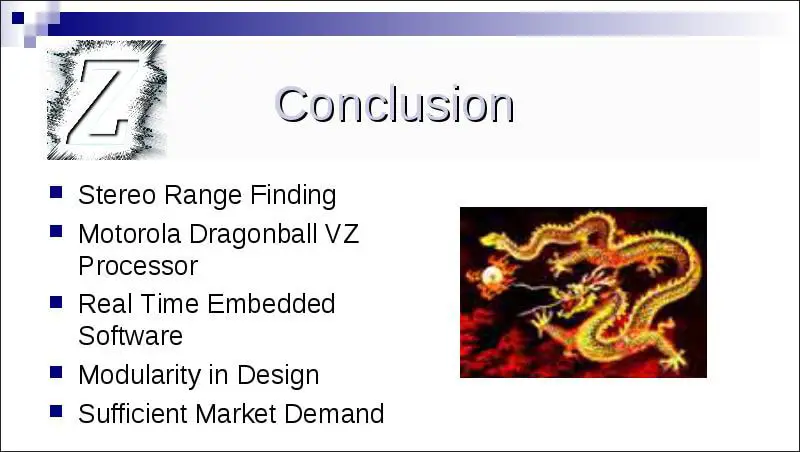
The DragonBall chip appeared during the peak of Dragon Ball’s popularity in Japan and Southeast Asia.
Motorola’s engineers trained hard and helped the chip reach new levels of power.
The chip ascended to the level where it was found in almost every device on Earth.
But the Dragon Ball chip peaked in the early-2000s and was replaced by superior technology. Such is the way of Moore’s Law, (that our chips will double in power every two years).
Even so, the DragonBall chip paved the way for the chips that we have inside of every smartphone manufactured today.
Without the DragonBall chip, these common devices wouldn’t be so common.
The DragonBall chip transformed the computing world.